Toad Sitting On A Mushroom
You've probably heard the terms toadstool and mushroom used interchangeably. But what is the difference between them, if anything?
What is a toadstool? Toadstool is an unscientific label that is sometimes applied to certain types of mushrooms. It usually refers to colorful and poisonous or inedible mushrooms. There is no biological distinction between a toadstool and mushroom that scientists make.
In this article, I'll explain what a toadstool is, how they might be different from mushrooms as a whole, where the term comes from, and more.
What Is A Toadstool?
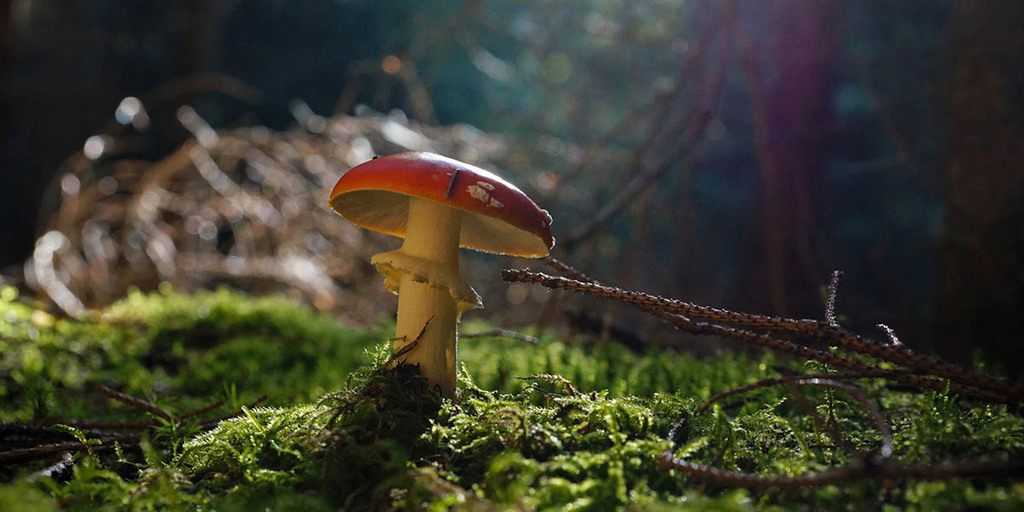
Toadstool is a term that can be used in casual speech for some or all types of mushrooms.
From a scientific perspective, there's no difference between a toadstool and a mushroom. There is no scientifically accepted way to tell them apart, and toadstools aren't a distinct group of fungi.
It's not like the difference between a toad and frog, or a cat and a dog, which are distinct taxonomy categories of animals.
In common speech, people tend to use the word toadstool to refer to fungi that are toxic, poisonous, or simply inedible. While the word mushroom is used to describe tasty and edible mushrooms.
Different language is used to refer to different types of mushrooms around the world.
So it shouldn't just be taken as a rule that all fungi described as mushrooms are edible, and all fungi described as toadstools are inedible.
In some places the words mushroom or toadstool can also refer to where a particular fungi grows.
In parts of Europe, people refer to mushrooms as fungi that typically grow in fields and tend to be pink or white in color.
Whereas toadstools are more colorful species that grow in the woods.
- If you have a pet you need you need to know which mushrooms are safe for dogs or cats to eat and what to do if they ate poisonous mushroom.
What Is The Difference Between Toadstools and Mushrooms?
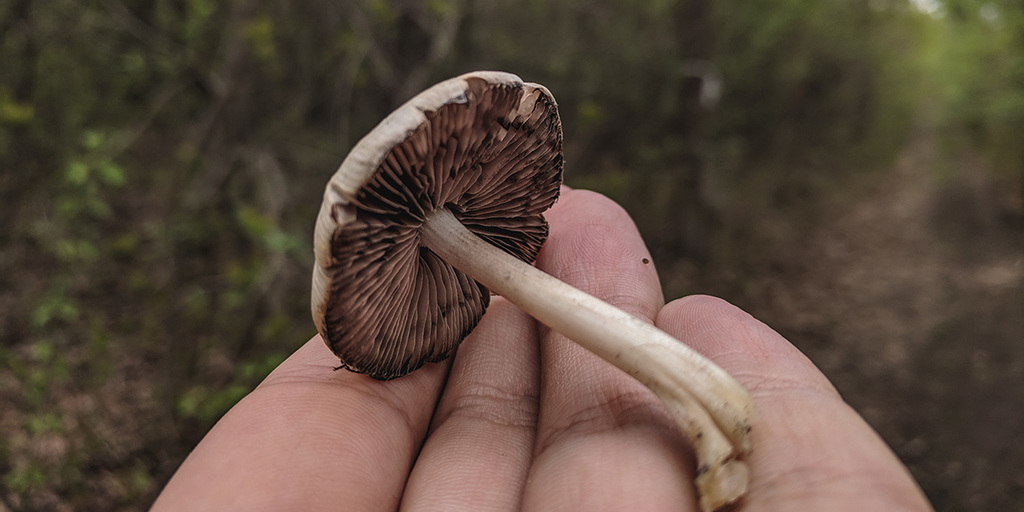
While there is no scientific distinction between toadstools and mushrooms, for practical purposes these different words might be used to describe specific types of fungi.
Both refer to the fruiting bodies of a fungus.
Even the Oxford Dictionary is not very clear in its definitions as to what the differences are between these two terms:
- Toadstool: The spore-bearing fruiting body of a fungus, typically in the form of a rounded cap on a stalk, especially one that is believed to be inedible or poisonous.
- Mushroom: A fungal growth that typically takes the form of a domed cap on a stalk, with gills on the underside of the cap.
As I mentioned, people generally use the word mushroom to describe fungi that are edible. Toadstool is used to describe inedible or poisonous mushrooms.
So we could say that all toadstools are types of mushrooms, but not all mushrooms are toadstools.
When we think of mushrooms, we usually think of fungi that are white in color. Button mushrooms come to mind.
Mushrooms also include varieties like oyster mushrooms or puffballs, that don't necessarily have the traditional mushroom shape.
When thinking about toadstools, it's most common to imagine more unique-looking toxic mushrooms.
Toadstools are most commonly represented as being red, with Amanita muscaria being the most common mushroom used to represent them as a group.
We tend to picture toadstools as mushrooms that have a defined cap and stalk.
However, this creates a confusing area for lots of poisonous mushrooms.
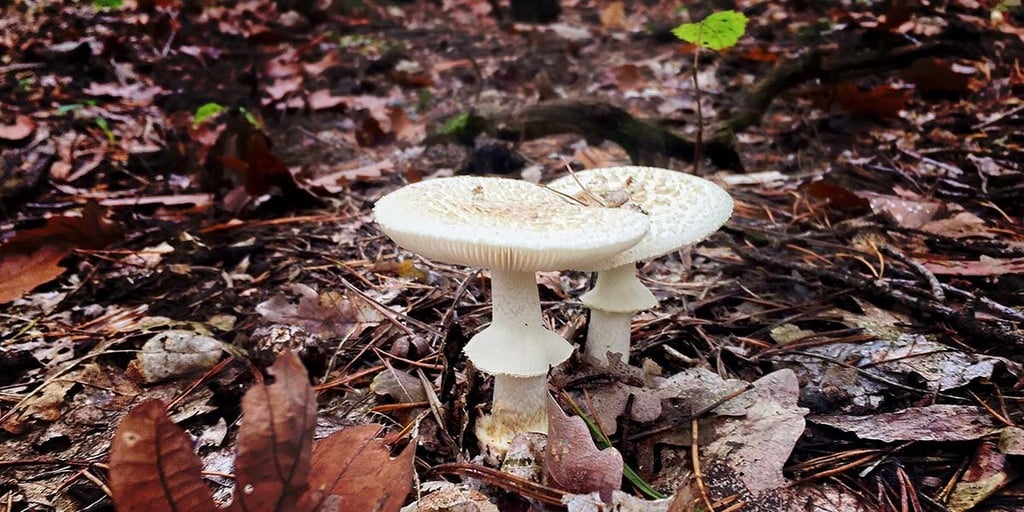
For example, the death cap is white in color and looks like what we traditionally think a mushroom looks like. But it's still one of the most poisonous and lethal varieties of fungi out there.
Both fungi considered mushrooms and toadstools are most likely to appear in the autumn months.
Both toadstools and mushrooms get their nutrients from decaying organic matter, with the goal of releasing their spores to reproduce.
- Learn the full guide of 20 Popular Types Of Mushrooms (And Their Uses) to know more about edible mushrooms and how to identify them.
The Origins of The Word Toadstool

Like many English words, the exact origin of the term "toadstool" is difficult to pinpoint, and language is constantly undergoing change.
But it's believed that people began using the term sometime between 1400 and 1600 AD.
Around this same time, the word mushroom was still in flux as well. People referred to fungi with various words like mushrom, mushrum, mousheroms, mussherons, musserouns, and muscherons.
The word toadstool is most likely a reference to fairy tales and folk tales that talk about toads actually sitting on toadstools.
In ancient times, people thought that toads were carriers of disease. So naturally, mushrooms that they sat on would become poisonous.
This is one way that people may have tried to explain the seeming randomness of why some mushrooms were edible while others were poisonous, in a time before science was available in the way that we recognize it today.
One other story is that flies would be drawn to toadstool mushrooms, so toads would often be found around them. There is some truth to this.
And in parts of Europe today, the Amanita muscaria mushroom is still broken into pieces and mixed with milk as an effective way of attracting and killing flies.
Other words besides toadstools were sometimes used for poisonous mushrooms as well.
Devil's droppings and wart caps are two terms that were once popular, but have fallen out of use in modern times.
How To Tell Edible Toadstools From Poisonous Ones
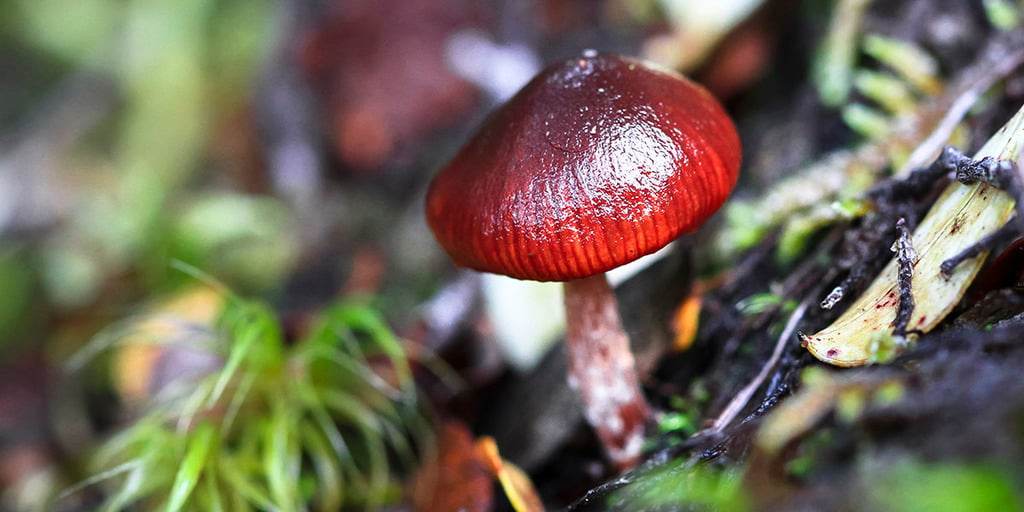
Not all fungi that look like what we traditionally associate with toadstools are poisonous.
For example, porcini, wine caps, and morels are some rather colorful and unique-looking mushrooms that you might think are toxic toadstools. But they're actually some of the tastiest mushrooms available!
Similarly, not all fungi that look like edible mushrooms are safe to eat.

Young amanita mushrooms can look like puffballs, or like button mushrooms even while they're growing.
You shouldn't attempt to eat any wild mushroom unless you're educated and experienced in identifying them.
Some poisonous mushrooms can be tricky to tell apart from edible species. In some instances, the only difference may be something subtle like the color of their spores.
Other factors that mushroom hunters need to take into account when evaluating a mushroom is its color, shape, size, stem color, whether it has a ring or volva, if it has warts, what it smells or tastes like, and other features.
As well as taking context into perspective like what season, habitat, and growth medium the mushrooms are located in.
Never eat any wild fungi that you find, whether mushrooms or toadstools, unless you're 100% sure that you have correctly identified it.
It's far better to pass up one potentially tasty meal, instead of taking the risk that you'll end up in the emergency room with kidney or liver failure.
Edible mushrooms are full of vitamins, minerals, and other nutrients. Learn the wide range of nutritional and health benefits that mushrooms have.
What Are Fairy Rings?
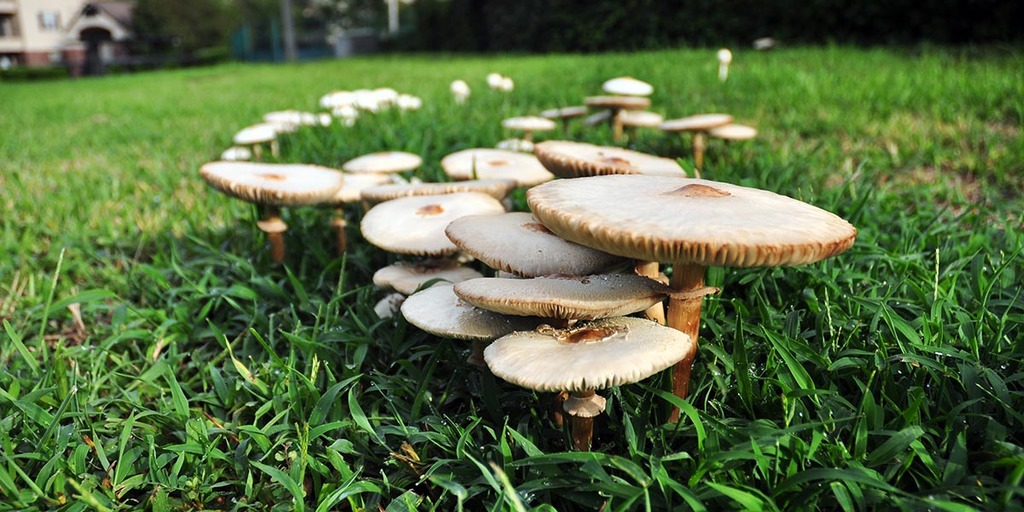
Along with toadstools and mushrooms, another term for fungi you might have heard tossed around is "fairy rings." What are these exactly?
Fairy rings are groups of mushrooms that naturally grow in a circular or arc shape. Some fairy rings can grow as big as 30 feet in diameter or more.
Like with toadstools, there are all kinds of folklore and superstitions about fairy rings being the work of fairies, elves, or witches.
In some stories they're seen as dangerous places, while other times they can be a sign of fortune and good luck.
There are about 60 different species of mushrooms that are known to grow in fairy rings. They form as the mycelium underground grows.
It uses up all of the nutrients in the soil such as nitrogen, and forms a circle or ring shape as it starts to work its way out from the middle.
Fairy rings tend to be more common in sandy or poor quality soil. There is also some evidence that fairy rings are more common in areas with wild rabbits.
Rabbits will chew the grass until it's very short, and then leave their nitrogen-rich droppings behind, which creates a perfect environment for fairy rings to grow.
Myths and Wives Tales About Toadstools and Mushrooms
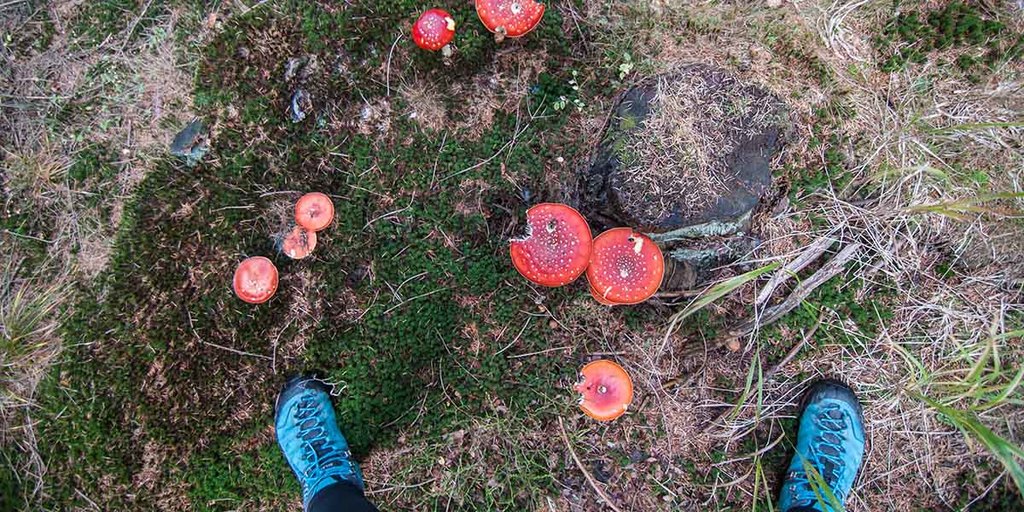
Over time, people have developed all kinds of ideas for easy ways of determining if a mushroom is edible or poisonous. But most of them turn out to be incorrect.
The only way to be 100% sure if a mushroom is edible is to positively identify it using scientific methods.
One myth is that if you put a silver spoon or a silver coin against a poisonous mushroom, it will turn black. In some versions of this story, the mushroom will turn black.
In others, the spoon will turn black. There are some mushrooms that contain certain alkaloids that will turn silver black, but some of them are edible and others are poisonous.
And there are many kinds of poisonous mushroom that won't exhibit this behavior.
Another misguided idea some people have is that if mushrooms are eaten by animals, then they must be edible. This is absolutely untrue.
Rabbits, wombats, slugs, and other animals love to eat amanitas and other poisonous mushrooms that will kill people if we eat them.
Just think about the fact that there are lots of poisonous berries that birds and animals can eat which people can't, and this idea doesn't make as much sense.
Some people claim that if a mushroom tastes and smells good, then it must be safe. This definitely isn't true either.

Amanita phalloides is one species that is deadly poisonous, but is said to actually taste quite nice. So while it could make a good meal, it would probably be your last.
There is an idea that if you eat a mushroom and don't get sick immediately afterward, then it must have been edible. This turns out not to be true either.
With some amanita mushrooms you can get symptoms like vomiting and nausea that go away after two or three days, or you have no symptoms at all, and then you suddenly die as much as two weeks later from internal bleeding.
So if you think you may have eaten a poisonous mushroom, it's best to seek medical attention even if you don't notice any symptoms right away.
One final myth says that if a mushroom peels easily, then it's safe to eat.
This isn't true either, and there's no correlation between whether a mushroom peels and whether it's edible or not. It's easy to peel a death cap mushroom, for example.
Some good general advice is to avoid all mushrooms with white gills, a sack at their base called a volva, and a ring or skirt around the stem. Also, avoid all mushrooms with red caps or stems.
These guidelines might cause you to miss out on some edible species, but it will also prevent you from eating some of the most poisonous ones.
Edible mushrooms contain a wide array of powerful healing compounds. Read my Medicinal Mushrooms Guide to learn more about mushrooms history, the medicinal benefits of different varieties, and what medicinal ingredients they contain.
How Do Toadstools Spread and Reproduce?
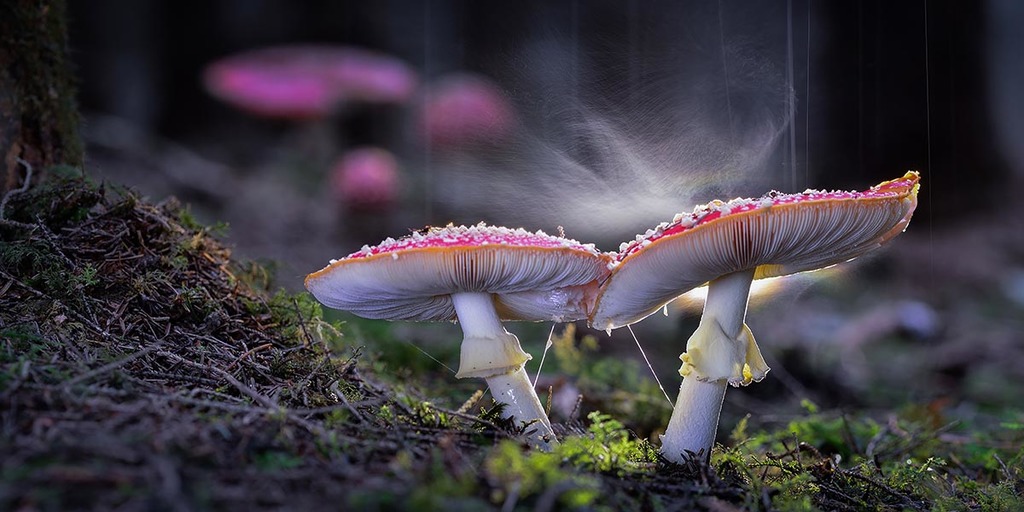
Since toadstools are mushrooms, they reproduce in the same ways. The toadstool or mushroom is the fruitbody of a larger underground fungal network called mycelium.
The goal of these fruitbodies is to create and disperse spores.
Spores are basically the fungi equivalent of seeds in plants, which are used to reproduce and spread themselves in nature. The spores in a toadstool are mostly located underneath the cap inside the gills.
Unlike plants that depend on animals eating their fruits or vegetables to disperse seeds, toadstools work differently.
Their spores are mostly loosened and carried by the wind, or raindrops or falling debris hits the toadstool and causes their spores to pop out.
Making a spore print by breaking off the cap of a toadstool and leaving it on a piece of paper overnight is one way to help accurately identify what species of fungus you're working with.
When the underground mycelium grows, this can also give the illusion that the mushrooms are growing and spreading. One fungus can produce hundreds or thousands of mushrooms on its own.
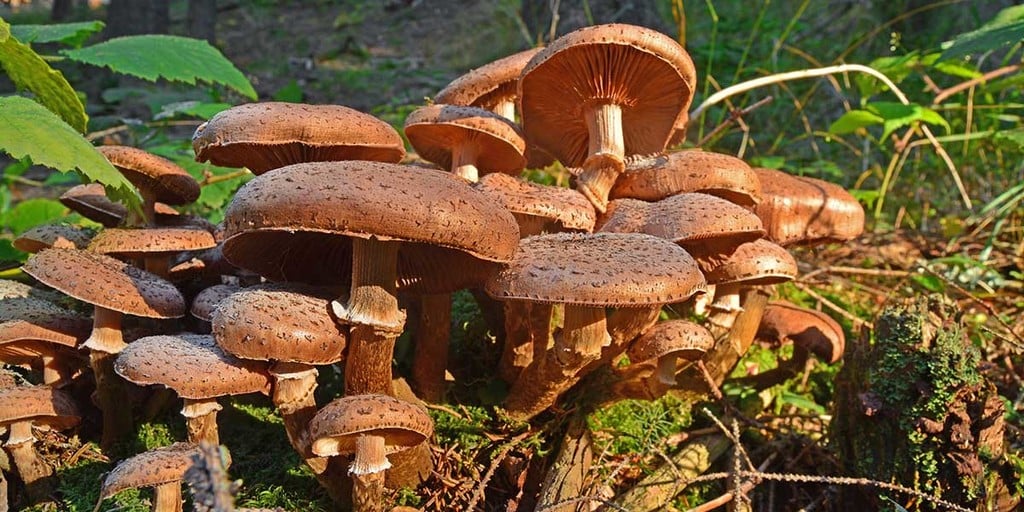
The largest fungus in the world is Armillaria solidipes or the honey fungus, the largest of which covers an area of 3.4 miles or 5.5 kilometers, making it the largest land organism on earth!
It's not uncommon for different mushroom colonies to spread and grow over surprisingly large areas.
How Can You Get Rid of Unwanted Toadstools?

If you have toadstools on your property, there could be several reasons why you want to get rid of them. They might just aesthetically bother you and ruin the look of your otherwise weed-free lawn.
Or they might pose a serious risk to the health of your pets or livestock.
Whatever the reason, there are a few ways to remove these fungi from your yard and reduce the risk of them popping back up again next season.
Fungicides generally aren't very effective against toadstools since the mycelium lives deep underground. But there are some other things that you can do.
Wet areas are especially prone to toadstool growth. So try to keep your yard from getting too moist.
You may want to remove trees casting excess shade on your land. The extra sunlight will help dry up excess water on your property and not leave damp areas for fungi to grow.
You can also remove thatch from your lawn. This is a thick layer of dead grass, leaves, and other organic matter that ends up getting matted up on the surface of the soil.
It provides a great food source for toadstools to grow.
You should remove thatch to take away toadstool's source of nutrients and therefore their ability to grow.
There are special motorized de-thatching tools that you can use to remove thatch, or cheaper de-thatching rakes you can get to manually remove thatch from underneath your grass.
After dethatching your lawn, you can use an aerator to pull plugs or cores out of the soil. This will help break up the soil and improve drainage, so water is less likely to pool near the surface.
For toadstools that you can already see, try digging them up along with some of the dirt underneath to try and remove some of the mycelium, and then throw them into the trash.
It's not recommended to add them to a compost pile, as you might just move the problem to another part of your yard.
Conclusion
People use the terms mushrooms and toadstools somewhat interchangeably, and there is no accepted scientific difference or categorization between the two.
The term toadstool likely comes from folklore and myths from 400 to 600 years ago. People believed that toadstools made comfortable seats for toads to sit on, or helped to attract flies for them to eat.
When should you refer to a mushroom as a toadstool? Really, it's up to you. Some people use the term toadstool to describe mushrooms that are poisonous or inedible.
Especially ones with colorful caps and clearly defined stalks, like amanita muscaria.
But don't rely on the terms toadstool or mushroom to decide what's edible or not. Some mushrooms that people call toadstools are edible, while others are poisonous.
The only way to be sure is to have an experienced mushroom hunter identify a mushroom using biological features like spore prints and gills, as well as context-specific details like what season or geography a mushroom is growing in, what types of tree it grows near, and other details.
If you need more info about mushrooms, how to grow them and identify, read my articles below:
- How To Grow Mushrooms: The Ultimate Guide
- Complete Guide To Chanterelle Mushrooms
- Complete Guide To Morel Mushrooms
- Hen of The Woods (Maitake): The Ultimate Guide
Toad Sitting On A Mushroom
Source: https://grocycle.com/toadstools-vs-mushroom/
Posted by: pearsoncoight.blogspot.com

0 Response to "Toad Sitting On A Mushroom"
Post a Comment